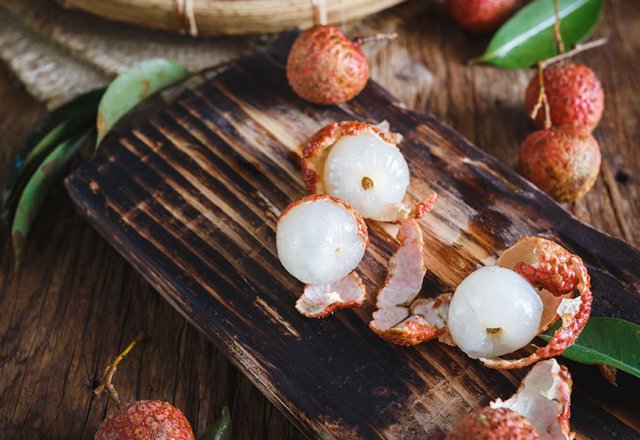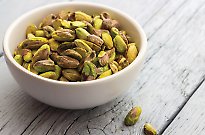
In season: delicious lychees
In season: delicious lychees

This summer sensation is not only bursting with flavour but also packed full of health and nutrition benefits – so what’s not to love?
"Surprisingly just one portion of seven Australian lychees contains as much vitamin C as a small orange – providing over 100 per cent of the recommended daily intake of vitamin C,” says lychee grower Ian Groves. “They are also ranked second behind strawberries in antioxidant levels. Lychees are recommended as part of a healthy balanced diet as they are high in potassium and contain good levels of calcium and fibre.”
Australian lychees are fat free and have fewer than 65 calories per 100 grams, making them the perfect summer delight if you’re watching your waistline.
These versatile tropical fruits also bring a unique, sweet and refreshing taste to the table, making them the ultimate alternative to your typical berry for summer entertaining. They can best be enjoyed fresh on their own or added to a healthy salad. They also complement chicken, pork, marinades and sauces for a summer BBQ.
Furthermore, Australian lychees make the perfect fruity dessert to complete your summer feast, as they can be frozen to make a refreshing sorbet or used to make a delicious jelly, crumble or cake. They even make the perfect addition to your party punch!
Australia has the longest lychee production season in the world. The industry produces fruit from October in Far North Queensland to March in northern New South Wales, giving the Australian industry a significant advantage over our competitors on world markets.
Australian lychees are considered the best in the world due to their delicious flavour and their unique production. They are also known around the world for their fresh and natural state, as the Australian growers do not use sulphur dioxide to help retain the colour of the skin, making our lychees consistently fresh, clean and green.
When selecting lychees choose those with pink or red skin. Once picked, the lychee does not continue to ripen but the skin of the lychee will start to turn a brownish-red colour due to contact with the air; however, this will not affect the flavour of the fruit.
Fresh lychees wrapped in plastic can be kept in a refrigerator for five to seven days and may be kept at room temperature for two to three days. Lychees can be frozen for up to six months or dried within their protective skin. So whether it’s a healthy treat eaten by yourself, #lycheelover, or shared with friends, #lycheelovers, enjoy the celebratory moment eating lychees this summer.
Storage
Storing and handling lychees correctly is the key to offering consumers fruit at its best.
Buying and storing:
- Choose fruit with skin that is pink or red
- Once picked, the lychee does not continue to ripen
- Keep fruit refrigerated at 5°C to prevent moisture loss
- Fresh fruit wrapped in plastic can be kept in a refrigerator for five to seven days
- Lychees can be frozen for up to six months or dried within their shells
- Lychees will discolour if not refrigerated and covered; however the eating quality of lychees is unaffected.















